In the world of natural wonders, sea moss stands out as a potential friend to all – young and old, ladies and gentlemen. But did you know it could also lend a hand to those dealing with diabetes, when our body’s insulin struggles with glucose, can lead to energy and dietary challenges. So, is sea moss good for diabetics?
When it comes to managing diabetes, dietary choices are crucial. It’s a delicate balancing act, and it can be challenging. But could sea moss be a safe addition to the menu? That’s a common question among those living with diabetes. This article unravels the connection between sea moss and diabetes management, exploring whether this natural gem could be in your diabetes-aware diet. So, let’s dive in and find out the answer to the question, “Is sea moss good for diabetics ?”
What Exactly is Sea Moss
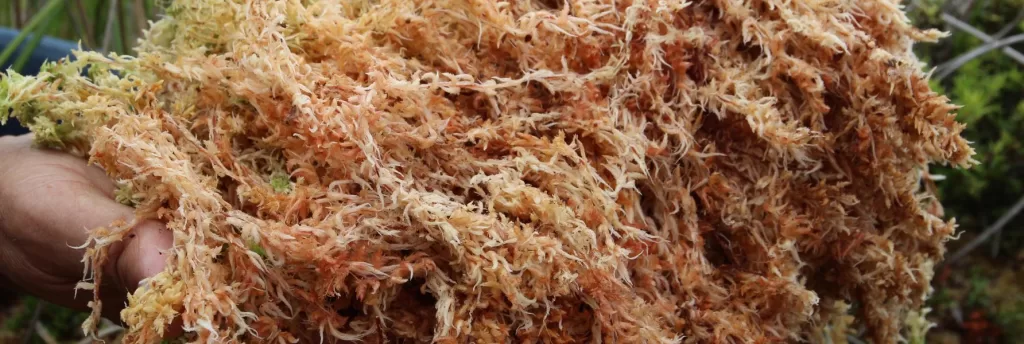
In the quest for the answer to ” Is sea moss good for diabetics “; let’s dive into the world of sea moss, vibrant red algae found in the rocky Atlantic Ocean. After being carefully harvested and dried, it’s transformed into powder or capsule form for your convenience. While it might not be widely known, sea moss has been used for ages in traditional medicine, offering various health benefits. It’s known to boost energy, aid digestion, and help fight infections.
Sea moss is a natural nutritional powerhouse with vital vitamins and minerals like iron, calcium, and potassium. Its antioxidants and carotenoids also contribute to shielding against chronic diseases. If you’re seeking a nourishing addition to your diet, consider trying sea moss – it might just be nature’s secret to better health. So let’s find out how is sea moss good for diabetics.
How is sea moss good for diabetics
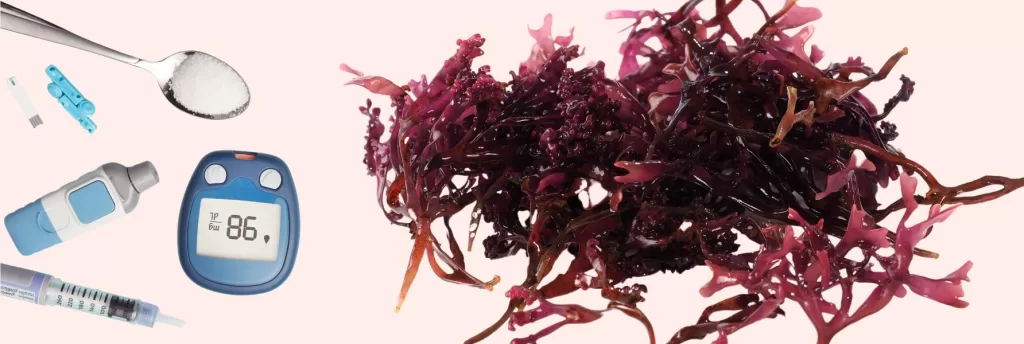
Sea moss, a remarkable marine gift, holds potential benefits for those managing diabetes. Its natural properties offer a helping hand in regulating blood sugar levels and promoting overall well-being. Let’s delve into how sea moss can positively impact diabetes, here’s how is sea moss good for diabetics :
- Blood Sugar Regulation: Sea moss contains compounds that can regulate blood sugar levels. For individuals with diabetes, this could mean better control and stability in managing their condition.
- Anti-Inflammatory Action: Inflammation often poses challenges for people with diabetes. Sea moss’s anti-inflammatory properties may help alleviate inflammation within the body.
- Immune Boosting: Rich in antioxidants, sea moss can boost your immune system, helping to defend against oxidative stress and supporting overall health.
- Hypoglycemic Effect: Studies suggest that sea moss may have a hypoglycemic effect, potentially lowering blood sugar levels. This could offer valuable assistance to those seeking better glucose management.
- Slow Glucose Absorption: Sea moss contains carrageenan, a soluble fiber that can slow down glucose absorption. This mechanism can contribute to more stable blood sugar levels over time.
- Thyroid and Insulin Sensitivity Support: Sea moss provides essential minerals like iodine, zinc, and magnesium, which are crucial for thyroid function and insulin sensitivity. This support could aid in maintaining blood sugar balance.
- Antioxidant Defense: With its bounty of antioxidants, sea moss protects against complications such as heart and kidney issues often associated with diabetes.
- Weight Management Aid: Fiber in sea moss assists in weight management by promoting satiety and healthy digestion, potentially helping with appetite control.
It’s important to note that the effects of sea moss can vary among individuals. While some may find significant benefits in managing blood sugar levels, others might experience more subtle impacts. As with any dietary change or supplement, consulting with your doctor professional is recommended to ensure it aligns with your diabetes management plan. Embracing sea moss as a potential ally in your journey to better health could yield promising results. So, the answer to the question “Is sea moss good for diabetics?” is yes.
Sea Moss Nutrients and Their Benefits

Sea moss, the marine wonder, is brimming with nutrients that can usher in a wave of benefits for your health. In our discussion of “is sea moss good for diabetics ?” let’s dive into these concise listicles to uncover the valuable nutrients that sea moss offers and how they can positively impact your well-being.
1: Protein Powerhouse
Nutrient: Protein
Benefits:
- Supports muscle repair and growth.
- Helps in keeping healthful hair, skin, and nails.
- Assists in weight management by promoting a feeling of fullness.
2: Mineral Marvels
Nutrients: Calcium, Magnesium, Iron, Potassium
Benefits:
- Calcium for strong bones and teeth.
- Magnesium for nerve function and blood pressure regulation.
- Iron for preventing anaemia and promoting oxygen transport.
- Potassium for heart health and fluid balance.
3: Vitamins for Vitality
Nutrients: Vitamin A, Vitamin C, Vitamin E
Benefits:
- Vitamin A for healthy vision and skin.
- Vitamin C for immune support and collagen production.
- Vitamin E is an antioxidant, shielding cells from damage.
4: Digestive Dynamo
Nutrient: Dietary Fiber
Benefits:
- Supports digestive health and regular bowel movements.
- Helps control blood sugar levels.
- Contributes to weight management by promoting fullness.
5: Enzymes and Antioxidants Ally
Nutrients: Enzymes, Antioxidants
Benefits:
- Enzymes aid in efficient nutrient absorption.
- Antioxidants combat free radicals and reduce oxidative stress.
6: Omega-3 Enrichment
Nutrient: Omega-3 Fatty Acids
Benefits:
- Supports heart health by reducing inflammation.
- Aids in brain function and cognitive well-being.
7: Thyroid Supporter
Nutrient: Iodine
Benefits:
- Promotes proper thyroid function.
- Supports metabolism and balanced energy levels.
8: Immune System Booster
Nutrient: Zinc
Benefits:
- Enhances immune system function.
- Supports wound healing and tissue repair.
9: Mood and Brain Harmony
Nutrients: Vitamins B6, B12
Benefits:
- Vitamin B6 aids in mood regulation.
- Vitamin B12 supports cognitive function and nerve health.
10: Skin and Hair Nourishment
Nutrient: Collagen
Benefits:
- Enhances skin elasticity and hydration.
- Supports hair growth and nail health.
Sea moss’s treasure trove of nutrients holds remarkable potential for improving various aspects of your health. Each element contributes to a healthier you, from protein and minerals to vitamins and antioxidants. Incorporating sea moss into your diet while consulting a healthcare professional can set you on a path toward wellness as deep and vast as the ocean.
Risks of Sea Moss for Diabetes: What You Need to Know
While finding out an answer to the question “is sea moss good for diabetics ?” let’s also know the risks. Sea moss has garnered attention for its potential benefits in managing diabetes, but like any natural remedy, it’s essential to be aware of potential risks. Here’s a closer look at some considerations:
- High Iodine Levels: Sea moss is naturally rich in iodine, which is vital to thyroid function. However, excessive iodine intake can be problematic, especially for individuals with thyroid conditions. If you have thyroid issues, it’s crucial to approach sea moss consumption with caution. Excessive iodine intake can disrupt thyroid function and lead to complications.
- Contamination Concerns: The ocean environment where sea moss grows can sometimes expose it to heavy metals and pollutants. Contaminated sea moss may pose health risks if consumed. Ensuring the quality and source of your sea moss is vital to reduce the risk of exposure to harmful substances.
- Medication Interactions: Like many natural supplements, sea moss can interact with certain medications. If you’re taking medications to manage your diabetes or other health conditions, consult your healthcare provider before adding sea moss to your routine. They can guide potential interactions and help you make an informed decision.
While sea moss holds promise for diabetes management, it’s essential to approach it with awareness of potential risks. Consulting your healthcare provider before incorporating sea moss into your diet is a wise step, especially if you have underlying health conditions or are taking medications. Remember, your health is a priority, and informed decisions are vital to finding the right balance for your well-being.
Other Benefits of Sea Moss

As we are discussing “is sea moss good for diabetics”; let’s also dive into these amazing advantages in easy-to-understand listicles.
1. Digestive Delight
- Sea moss is loaded with fiber, promoting smooth digestion and regular bowel movements.
- Its prebiotic fiber nourishes gut-friendly bacteria, reducing the risk of obesity and chronic diseases.
2. Inflammation Buster
- Sea moss contains carrageenan, which inhibits inflammatory molecules.
- Antioxidants like vitamins A and C in sea moss neutralize cell-damaging compounds, reducing inflammation.
3. Brain Boost
- Iodine in sea moss supports thyroid function, which is critical for brain development and cognitive health.
- Prevent cognitive impairments like ADHD by ensuring sufficient iodine, especially in pregnancy and childhood.
4. Immunity Hero
- Sea moss boasts beta-glucan, a fiber that amps up the immune system.
- Enhance natural killer cell activity to fend off infections and stay healthy.
5. Heart Guardian
- Sea moss is rich in heart-friendly potassium, helping lower blood pressure.
- Balance sodium effects to safeguard against hypertension and heart issues.
6. Potential Anti-Cancer Ally
- Sea moss contains fucoidan, which shows promise in inhibiting cancer cell growth.
- Preliminary studies suggest it may slow breast, colon, and lung cancer cells, but more research is needed.
7. Skin Savior
- Sea moss is a source of collagen, a protein vital for youthful, elastic skin.
- Combat aging by maintaining skin strength and elasticity.
8. Joint Comfort
- Sea moss offers glucosamine, which is known to reduce joint inflammation and pain.
- Slow the progression of osteoarthritis and ease joint stiffness.
9. Weight Management
- Sea moss’s fiber content aids weight loss by promoting a feeling of fullness.
- Regulate blood sugar levels and prevent post-meal insulin spikes.
As we have already found the answer to ” is sea moss good for diabetics?” is yes. Lets also explore the ways to include it in our diet. Including sea moss in your diet isn’t just a food trend; it’s a smart choice for overall health and well-being. Enjoy these benefits by incorporating sea moss into your daily routine.
How to include sea moss in your diet
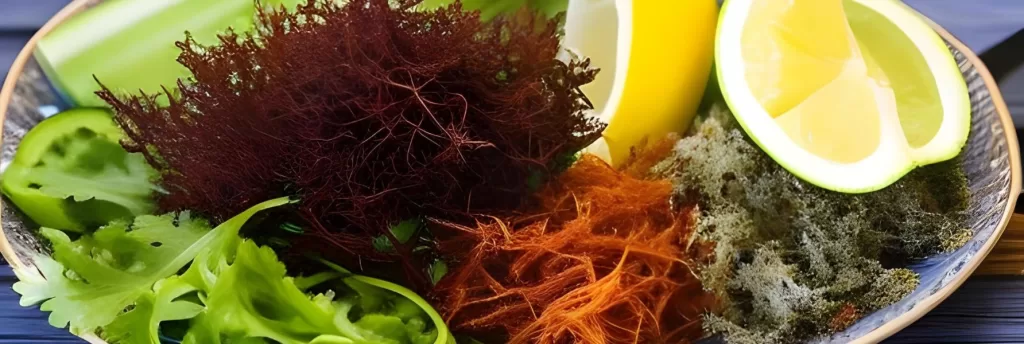
Incorporating sea moss into your daily meals can be a delightful and nutritious experience. This versatile sea vegetable offers various health benefits and can be used in culinary creations. Here’s a guide to help you make the most of sea moss in your diet:
- Sea Moss Gel: Making gel is one of the simplest ways to include sea moss into your meal plan. Soak dried sea moss in water to prepare it until it swells and becomes soft. Then, blend it into a gel-like consistency. This sea moss gel can be conveniently stored in the refrigerator for easy access.
- Smoothies: Boost your morning routine by adding a tablespoon of sea moss gel to your daily smoothie. Sea moss blends harmoniously with fruits such as bananas, berries, and mangoes. Not only does it contribute to a creamier texture, but it also enhances the nutritional value of your smoothie.
- Soups and Stews: Sea moss can serve as an excellent thickening agent in soups and stews. Blend the sea moss gel and gently stir it into your favorite soup to introduce an extra layer of nutrients and create a smoother texture.
- Desserts: Transform your desserts into healthy indulgences by incorporating sea moss. Whether puddings, jellies, or ice creams, sea moss can lend a gel-like consistency and a subtle hint of the ocean to your sweet treats.
- Salad Dressings: Elevate your salad game by infusing your dressings with sea moss gel. This innovative twist adds a nutritious touch and introduces essential minerals to your salads.
- Oatmeal and Porridge: Start your day on a nutritious note by stirring sea moss gel into your morning oatmeal or porridge. It enhances the texture and provides a wealth of nutrients for a hearty breakfast.
- Sea Moss Tea: Wind down in the evening with a soothing cup of sea moss-infused tea. Simply steep dried sea moss in hot water, and you can enhance the flavor with honey and lemon. This tea offers both comfort and health benefits.
- Capsules and Supplements: Sea moss is available as capsules and supplements at health food stores for those who prefer a more convenient option. These provide an easy way to enjoy the benefits without the taste or texture concerns.
- Smoothie Bowls: Get creative in the kitchen by crafting beautiful and nutritious smoothie bowls. Blend sea moss gel with frozen fruits and top them with nuts, seeds, and fresh berries for a satisfying and visually appealing meal.
- Energy Bars: Whip up homemade energy bars by incorporating sea moss into the mix. Combine it with oats, nuts, dried fruits, and honey to create convenient and nutritious snacks.
- Sea Moss Water: Enjoy the benefits of sea moss by making it-infused water. Add a spoonful of sea moss gel to a glass of water. It’s a quick and straightforward way to incorporate sea moss into your daily routine.
- Smoothie Popsicles: Stay refreshed during hot weather by freezing sea moss-infused smoothies into popsicle molds. These popsicles provide a cooling and nutritious treat.
As you explore these various ways to include sea moss in your diet, keep in mind that sea moss possesses a subtle oceanic flavor that can complement sweet and savory dishes.
Sea Moss Recipes for Diabetes
“Is sea moss good for diabetics?” Now we know the answer is yes. So, in this culinary journey, we’ll explore how this nutrient-rich seaweed can be incorporated into delicious, diabetes-friendly recipes. Discover the flavorful and health-conscious ways to embrace sea moss as a beneficial ingredient in your diabetic diet.
Creamy Sea Moss Smoothie
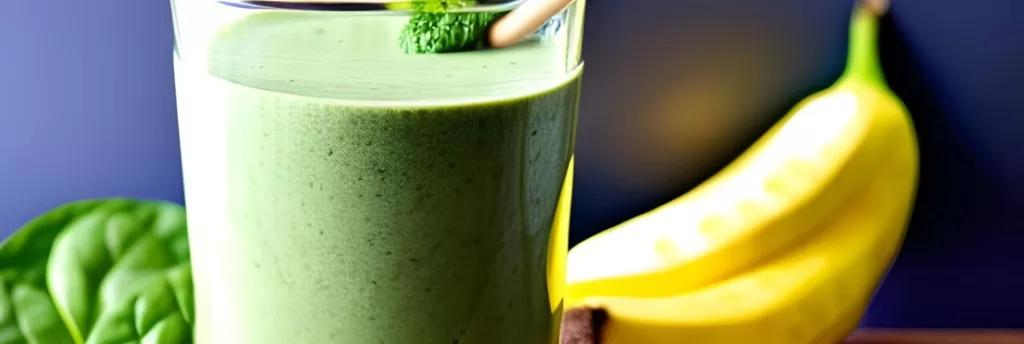
Start your day with a burst of energy and nutrition with this creamy sea moss smoothie.
Ingredients:
- One tablespoon of sea moss gel
- One ripe banana
- 1/2 cup spinach
- 1/2 cup almond milk
- One tablespoon honey (optional)
- 1/2 teaspoon cinnamon
Directions:
- Combine sea moss gel, banana, spinach, almond milk, honey (if desired), and cinnamon in a blender.
- Blend until smooth.
- Pour into a glass and enjoy your nutrient-packed breakfast.
Sea Moss and Veggie Salad

Enhance your salad game by adding sea moss, providing a satisfying crunch and an array of minerals.
Ingredients:
- Two tablespoons of soaked sea moss
- 2 cups mixed greens
- 1/2 cucumber, sliced
- 1/2 red bell pepper, diced
- 1/4 red onion, thinly sliced
- 1/4 cup cherry tomatoes
- Two tablespoons balsamic vinaigrette
Directions:
- Rinse soaked sea moss thoroughly and chop it into small pieces.
- Combine mixed greens, cucumber, red bell pepper, red onion, cherry tomatoes, and sea moss in a bowl.
- Drizzle with balsamic vinaigrette and toss gently.
- Serve and savour the freshness!
Sea Moss-Infused Quinoa
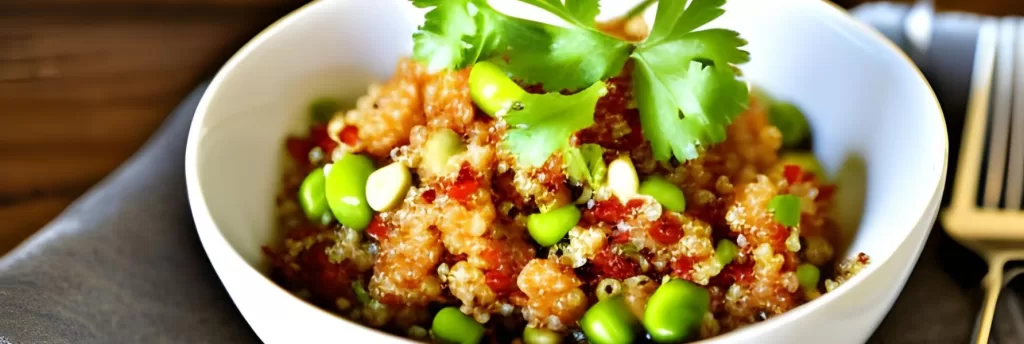
Quinoa is a diabetes-friendly grain; it becomes a powerhouse of nutrients when combined with sea moss.
Ingredients:
- 1/2 cup cooked quinoa
- Two tablespoons of sea moss gel
- 1/4 cup diced bell peppers (red, yellow, or green)
- 1/4 cup cooked black beans
- 1/4 cup corn kernels
- 1/2 teaspoon cumin
- Salt and pepper to taste
Directions:
- Mix cooked quinoa and sea moss gel in a bowl until well combined.
- Add diced bell peppers, black beans, corn kernels, and cumin.
- Season with pepper and salt, and stir gently.
- Serve as a side dish or a light meal.
Sea Moss-Enhanced Oatmeal
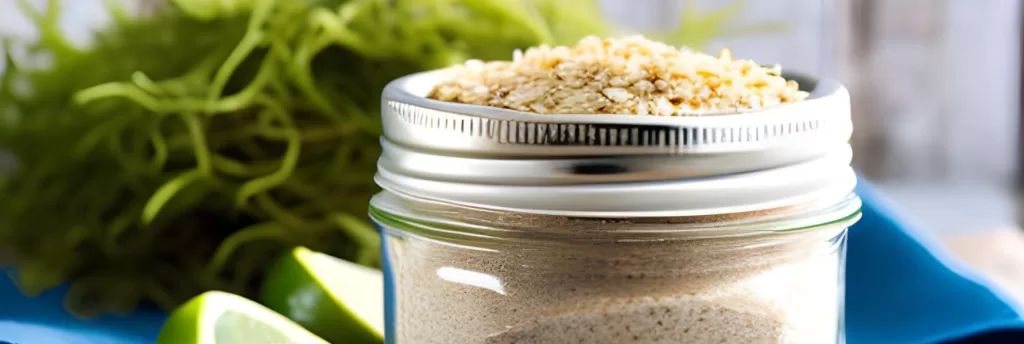
Upgrade your morning routine with a hearty bowl of sea moss-enhanced oatmeal brimming with fibre and vitamins.
Ingredients:
- 1/2 cup rolled oats
- 1 cup water or almond milk
- One tablespoon of sea moss gel
- 1/4 cup fresh berries (e.g., blueberries, strawberries)
- One tablespoon chopped nuts (e.g., almonds, walnuts)
- One teaspoon of honey (optional)
Directions:
- In a saucepan, combine rolled oats and water or almond milk.
- Cook over medium heat until it attains the desired consistency.
- Stir in sea moss gel.
- Top with fresh berries, chopped nuts, and honey (if desired).
- Enjoy a nutritious and filling breakfast.
Sea Moss-Infused Green Tea
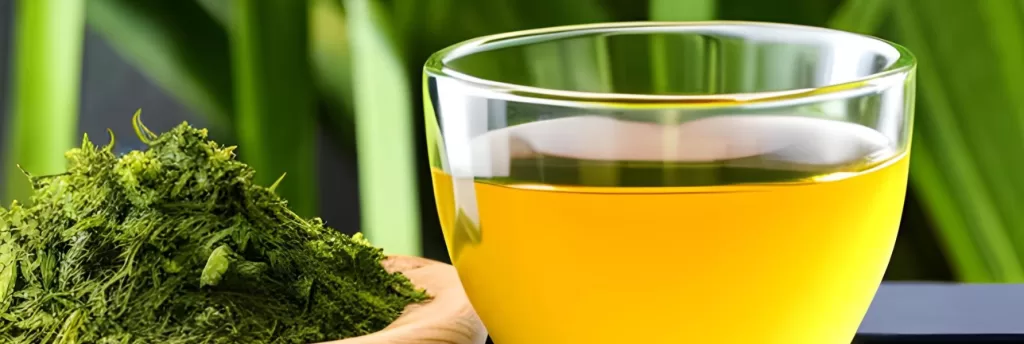
Unwind in the evening with a soothing cup of sea moss-infused green tea, known for its antioxidant properties.
Ingredients:
- One green tea bag
- 1 cup hot water
- One tablespoon of sea moss gel
- One teaspoon of honey (optional)
- Lemon slice (optional)
Directions:
- Soak the tea bag in hot water for 3-5 minutes.
- Remove the tea bag and stir in sea moss gel.
- Add honey and a lemon slice if desired.
- Sip your way to relaxation and health.
Conclusion
In conclusion to “Is sea moss good for diabetics,” sea moss holds promise as a valuable addition to your diabetic diet due to it’s rich mineral content and potential to assist in blood sugar regulation. However, it should be used in moderation and under the guidance of a healthcare professional as part of a holistic approach to wellness.
The ongoing exploration of sea moss and its potential benefits suggests that this marine superfood has much to offer. If you’re looking for a natural way to support your health and manage diabetes, sea moss may be a suitable option. Remember to consult your healthcare professional on its inclusion in your diabetes management plan.
FAQs about “Is Sea Moss Good for Diabetes?”
Is Sea Moss Safe for Diabetics?
Sea moss is usually safe to eat and typically doesn’t pose many risks or side effects when consumed in moderation. There isn’t any specific reason for people with diabetes to avoid it, but they need to be aware of some common potential issues that could arise.
Is Sea Moss Good for Diabetes?
Yes, sea moss is generally good for individuals with diabetes. However, avoiding excessive consumption due to certain potential risks is essential, which we’ll discuss shortly. While there isn’t definitive research on sea moss’s direct impact on blood glucose levels, its nutritional profile is often associated with potential anti-diabetic benefits.
Sea moss contains significant amounts of iodine, calcium, magnesium, and iron, making it a candidate for aiding in diabetes management. Sea moss may help lower blood sugar levels and reduce insulin resistance. Although some research has explored these potential benefits, most studies have been conducted on animals. Therefore, human clinical trials are needed to confirm its effectiveness.
Before incorporating sea moss into your diabetes management plan, it’s advisable to consult with a healthcare professional. This precaution is essential because sea moss may interact with certain medications and health supplements.
Additionally, opt for wild-caught Irish moss whenever possible when choosing sea moss. It tends to be preferable as it is less likely to be exposed to pollutants often associated with farm-raised algae.
Who Should Avoid Sea Moss?
Excessive consumption of sea moss can lead to potential issues such as iodine or heavy metal toxicity and digestive discomfort. Therefore, it’s crucial to exercise caution. If you fall into any of the following categories, it’s advisable to avoid sea moss:
Thyroid Issues: If you have a thyroid problem, sea moss, high in iodine, may not suit you. It’s essential to consult your healthcare adviser before including it in your diet.
Pregnancy: Pregnant individuals should be cautious about their sea moss intake. Always consult with your healthcare adviser before making any dietary changes during pregnancy.
Blood Thinners: If you’re taking blood-thinning medications, sea moss might interact with them. It’s essential to consult with your healthcare adviser to ensure no adverse interactions.
Shellfish Allergies: Sea moss belongs to the seaweed family, and while it’s not a shellfish, individuals with shellfish allergies may also be allergic to sea moss. It’s better to err on the side of caution and avoid it if you have such allergies.
Can Sea Moss Improve Liver Health?
Indeed, sea moss has the potential to enhance your liver’s well-being. This seaweed is packed with essential nutrients like vitamins, minerals, and antioxidants, all of which have been known to benefit the liver. Additionally, sea moss is a source of dietary fiber, which can aid in lowering cholesterol levels, reducing inflammation, and promoting overall liver health.

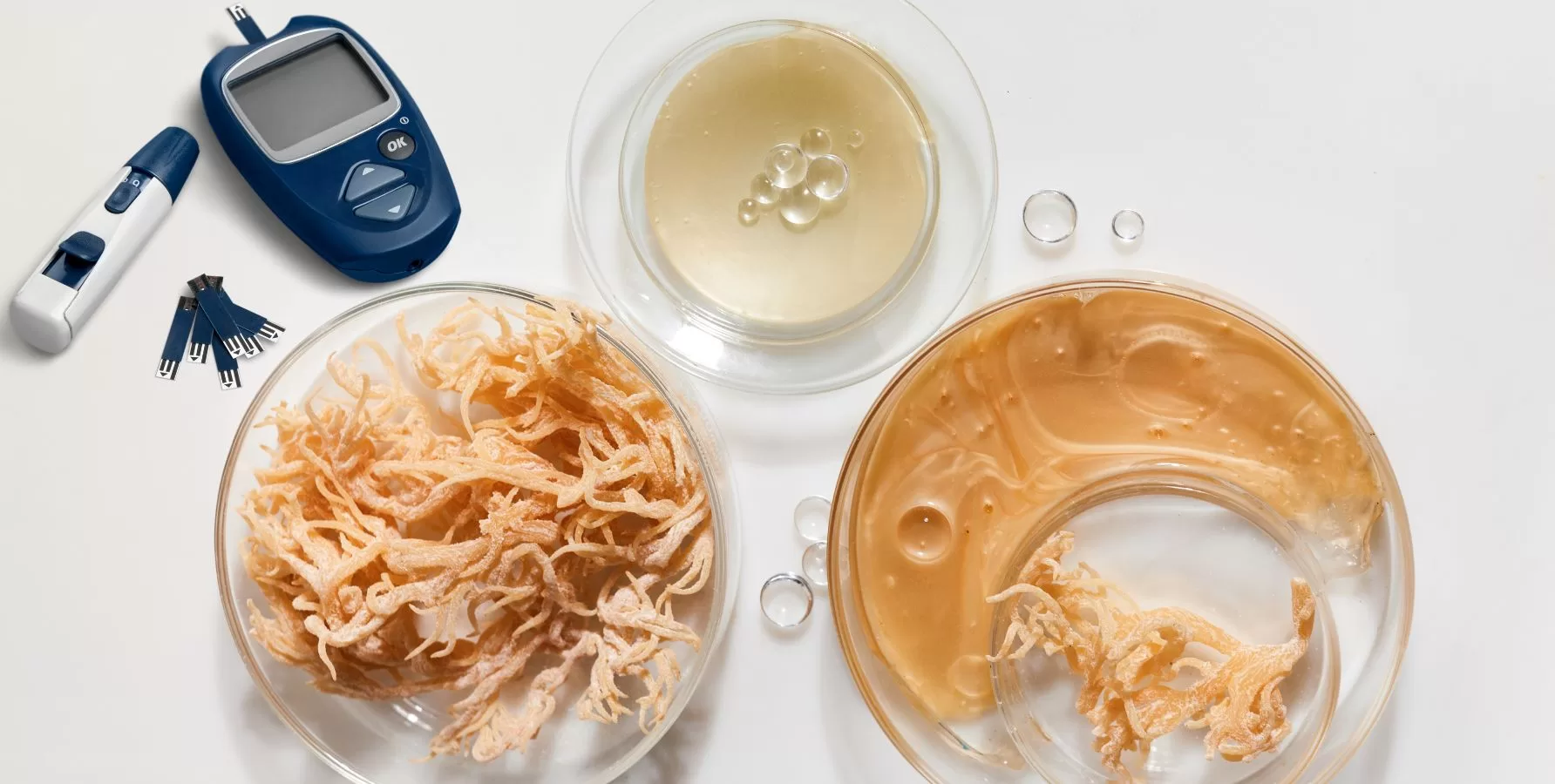

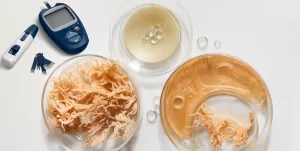




0 Comments